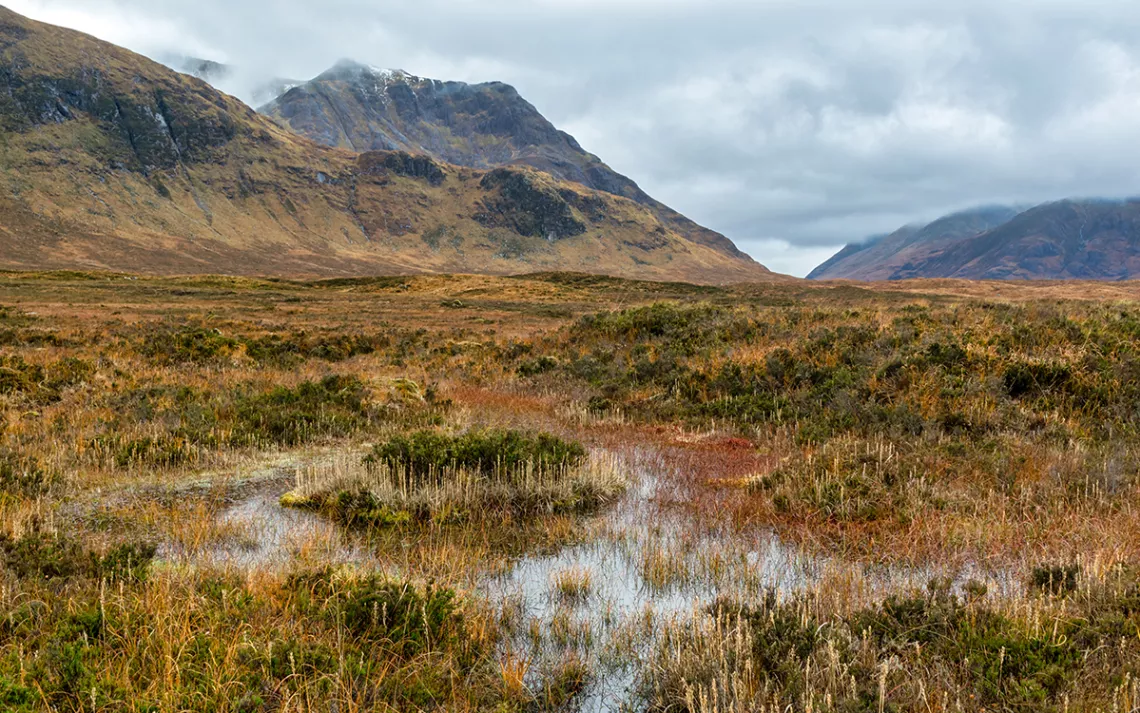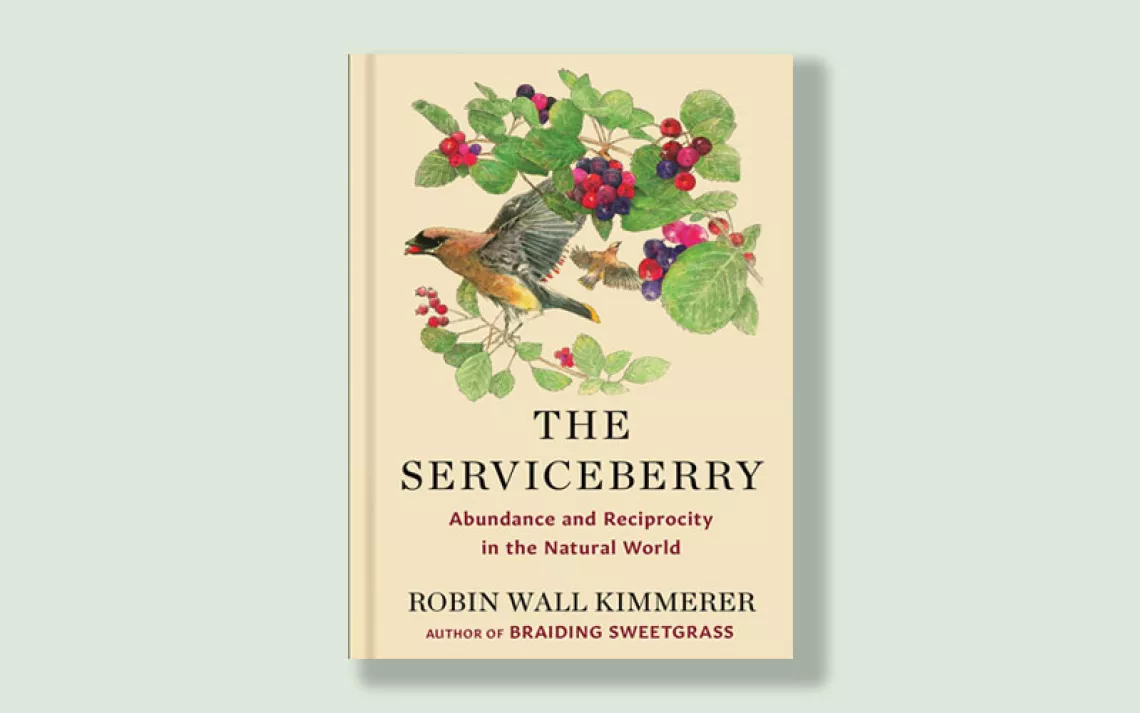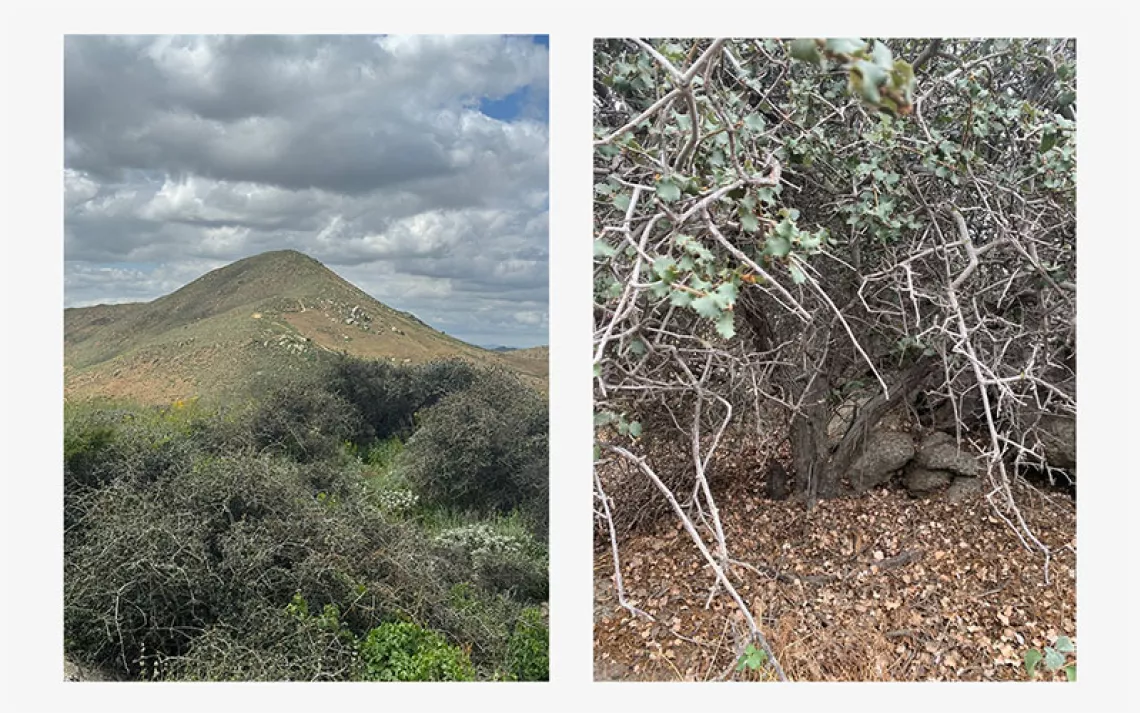Bringing Back Bogs
Researchers are working to find the best ways to help soggy ecosystems recover

Photo by Shawn Williams/iStock
Among remnants of charred trees and scorched soil, patches of bright-green moss dot the landscape outside of the hamlet of Red Earth Creek in Alberta, Canada. The area used to be a peatland—a wetland that accumulates a thick mat of partly decayed organic matter, or peat. When a fire burned through the landscape in 2015, however, the once-thriving ecosystem was left dusty and barren.
“Imagine the surface of the moon with some burnt tree stumps,” says Sophie Wilkinson, a postdoctoral researcher at McMaster University in Hamilton, Ontario. Two years after the fire, Wilkinson and her colleagues transplanted cookie-size chunks of sphagnum moss—a key component of healthy peatlands—back into the burnt landscape. The researchers hope the treatment will kickstart the ecosystem’s recovery.
Peatlands typically develop over thousands of years, accumulating carbon in the form of dead vegetation. Healthy peatlands are carbon sinks. Globally, they store more than 550 billion tonnes of carbon—more than half the volume contained in the atmosphere. Because peatlands are so wet, they are generally resistant to fires, but in recent years, they have become increasingly prone to burning. And after a fire, peatlands recover slowly.
Transplanting moss may help return the ecosystems to a carbon-capturing state. “With climate change accelerating as it is, the faster we can return those systems to carbon sinks, the better,” Wilkinson says.
As one of the most efficient carbon-storing ecosystems on the planet, peatlands play a critical role in fighting climate change. These waterlogged ecosystems can be both a blessing and a curse for climate, however. Dry, degraded peatlands are not only vulnerable to fires that emit massive amounts of greenhouse gases, but also unhealthy peatlands release carbon even without burning. In damaged or drained peat, organic matter is exposed to oxygen, which speeds up decomposition and causes carbon to leak into the atmosphere. Emissions from damaged peatlands account for about 5 percent of human-caused carbon emissions each year—roughly on par with total emissions from Russia.
“Degraded peatlands contribute a huge amount of CO2 to the atmosphere and have turned the entire peatland system globally from a net sink to a net source,” says Roxane Andersen, professor of peatland science at the University of the Highlands and Islands in Scotland.
Recognizing the importance of keeping peatlands’ carbon in the ground, governments, industry, and scientists are now pushing to protect and restore them. In 2016, the United Nations Environment Programme launched an initiative aimed at protecting, restoring, and sustainably managing peatlands to prevent carbon from being released. Efforts are now underway to rewet or restore degraded peatlands in several countries, including Russia, Canada, Scotland, Ireland, and Indonesia. Although researchers have developed techniques to help certain types of peatlands recover from specific disturbances, humans have injured the ecosystems in a variety of ways, and each requires its own restoration approach. Peatlands also come in many forms, from tropical peat swamp forests to northern bogs. As researchers and reclamation specialists face the task of restoring different peatlands in various states of disarray, the challenge is finding the best ways of nursing them back to health.
Peatlands have historically been viewed as wastelands, and for centuries people have tried to drain them and turn them into productive areas, such as agricultural fields and tree farms. A slew of other human activities have taken a toll on peatlands too, including urban and industrial developments, oil and gas production, and peat extraction for fuel and horticulture. Adding to the threats that peatlands face is climate change, which is drying them out across Europe.
More than 80 percent of Scotland’s peatlands are degraded in some way, and the country has emerged as a leader in restoration. Last year, the government pledged £250 million (about $341 million) toward restoring 250,000 hectares of peatlands by 2030.
In the Flow Country, a rolling expanse of bog in the north of Scotland where peat can reach 10 meters in depth, excavators are smoothing out the terrain and blocking drainage ditches to keep water in place. Contractors are also cutting down trees that were planted in the naturally open landscape in the 1980s. The plantations damage critical wildlife habitat and contribute to carbon losses from the peat, says Andersen, who has been studying the area. “The trees basically act like big giant straws,” sucking water out of the peatland and drying it out. Although trees capture carbon as they grow, over the lifetime of a plantation, trees actually cause a net loss of carbon from the peatland. Counter to popular perception, “the wrong tree in the wrong place is not great for climate,” she says.
In Canada, peatlands are more often affected by peat extraction than by tree farms, and early restoration efforts in North America focused on bogs mined for horticultural peat, which is sold as a growing medium. Industrial peat mining often involves draining bogs and also strips sphagnum mosses from the surface. These mosses play a major role in shaping the ecosystem by absorbing water and releasing compounds that slow decay. But after peat harvesting, they do not readily grow back. “For restoration, you have to bring back the mosses,” says Line Rochefort, professor of plant sciences at Université Laval in Québec, who developed a technique in the 1990s to do just that.
To return a harvested bog to health, Rochefort and her colleagues typically collect a layer of living vegetation from a nearby bog, load it into a truck, and spread it in tiny fragments over the bare peat surface that needs to be restored. Mosses can grow back from the fragments, and seeds and spores of other peatland plants get transferred in the process too. The team then spreads fertilizer as well as a protective cover of mulch over the field and blocks drainage ditches. Within 10 years, the space will be carpeted with sphagnum, Rochefort says. The bog from which the donor material is collected also recovers quickly, research shows.
The technique, first used at an ecosystem scale to restore a bog in Québec, has been widely applied in North America and internationally. However, the approach is best suited to sphagnum-dominated, northern peatlands, Rochefort says. Other types of peatlands have different hydrological patterns and are characterized by distinct plants. A single restoration approach doesn’t work across the board.
Researchers and reclamation specialists are now trying to find the best ways of restoring different types of peatlands, such as fens, which unlike bogs have water flowing through them. This moving water makes restoring fens complicated: Researchers can’t simply plug outlets; yet too much flow causes erosion. “It’s a tricky business to control the water level,” Rochefort says. When scientists get the water level right, however, fen plants seem to regenerate on their own.
Scientists are also developing ways to help peatlands recover after a greater variety of disturbances, from mining to cranberry farming. Practitioners “need more than one cookie-cutter approach” to restoring peatlands, says Bin Xu, research chair in peatland restoration at the Northern Alberta Institute of Technology. Xu and his colleagues are working to bring peatlands back to areas affected by oil and gas developments, such as well pads. In one of the first well pad restoration trials in 2011, researchers scraped away the mineral material that makes up the pad, fluffed up the underlying peat, and revegetated the area. Three years later, the site had already started taking up carbon, Xu says.
One of the ongoing questions in the field is just how well restoration works. Studies on some of the earliest restored bogs in Scotland and Canada have shown that peatlands can indeed go back to accumulating carbon in 10 to 20 years. But more research is needed to see if other peatlands follow a similar trajectory. Methods are still being tested for many different conditions, and in some cases, not enough time has elapsed to see results, says Maria Strack, professor of geography and environmental management at the University of Waterloo in Ontario.
People may have to apply restoration techniques before researchers have all the answers, however. “We don't have a lot of time to just keep waiting for more and more information,” Strack says.
According to Wilkinson, the science is clear: Restoration is urgent. As fires become more severe, the work will only become more critical. In some cases, burnt peatlands don’t just recover slowly when left alone; they don’t recover at all, she says. “Any work we can do to mitigate that outcome is going to be crucial.”
 The Magazine of The Sierra Club
The Magazine of The Sierra Club



